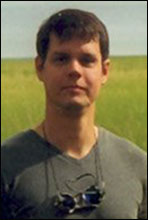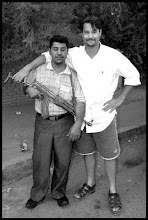Article at CNN on two Americans missing in Iraq - Jeffrey Ake and Sgt. Ahmed Altaie (alternative spellings: Ahmed Qusai al-Taayie, Ahmed K. Altaie, Ahmed Kousay al-Taie, Ahmad Qusay al-Ta’ae). Jeffrey Ake was abducted on April 11, 2005 and has now been missing for 5 years.
By Jason Hanna, CNN, April 11, 2010
[Jeffrey] Ake is one of 11 Americans still missing in Iraq, 21 months before the United States is scheduled to withdraw all its troops from the country. The 10 civilians and one soldier disappeared after the 2003 U.S.-led invasion of the country, and each has been missing for at least two years, according to the U.S. State Department. [...]Some conflicting information - the CNN article states there are 11 Americans missing in Iraq but a February 8 article in the News Tribune cited 18 missing including a second unknown member of the US military. It should be noted that #18 was Issa Salomi - now safely returned to his family in California - leaving 17 believed still missing.
U.S. officials are working for the safe return of all 11 missing Americans and continuing to call for their immediate release and any information about them, State Department spokesman John Fleming said. The government also is trying to help with the recovery of other nations' citizens who are missing in Iraq, including four from South Africa and one each from the United Kingdom, Russia and Japan, Fleming said.
In Ake's case, the director of the Office of Hostage Affairs at the U.S. Embassy in Baghdad recently conducted a review of the kidnapping "to reinvigorate source development," Fleming said.
I'm attaching an updated chart.

Additional Reading
JeffAke.com - website for donations
US Army Sergeant Ahmed Qusai al-Taayie - facebook page
18 Americans Missing in Iraq - February 2010
February 8, 2010
They search if someone’s missing in Iraq
By Scott Fontaine, The News Tribune, February 8, 2010



